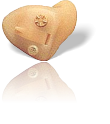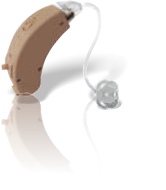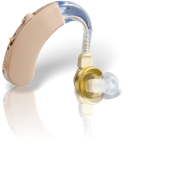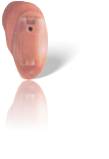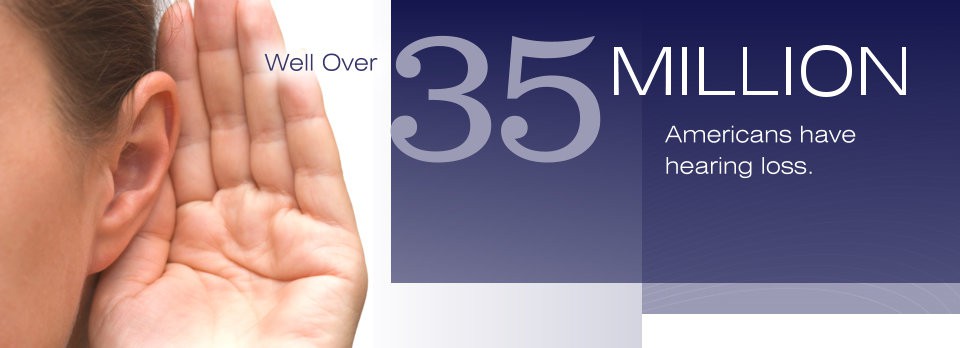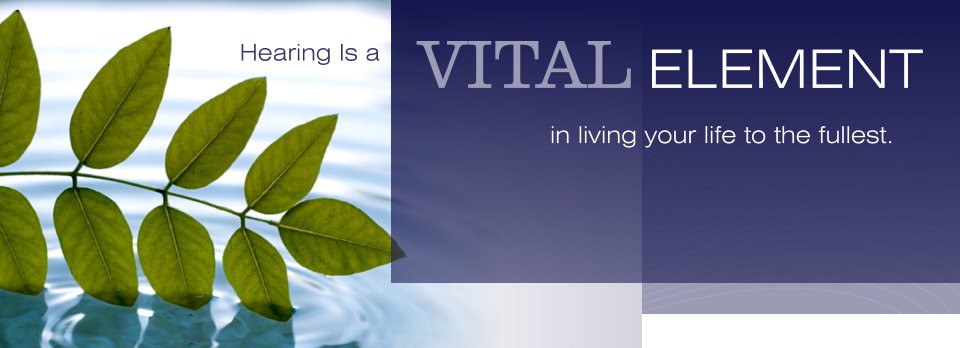

Hearing aids: How to choose the right one
Many types of hearing aids exist. So which is best for you? Find out what to consider when choosing a hearing aid.
Perhaps you've thought about getting a hearing aid, but you're worried about how it will look and wonder whether it will really help. Knowing more
about the hearing aid options available to you, what to look for when buying a hearing aid and how to break it in may help alleviate some of your
concerns.
Hearing aid styles
All hearing aids contain the same parts to carry sound from the environment into your ear. However, hearing aids do come in a number of styles,
which differ in size and the way they're placed in your ear. Some are small enough to fit inside your ear canal, making them almost invisible.
Others fit partially in your ear canal. Generally, the smaller a hearing aid, the less powerful it is, the shorter its battery life and the more it will cost.
The following are common hearing aid styles.
Copyright © 2014 Vancouver Hearing Aid Center and RJS Acoustics Vancouver, WA. All Rights Reserved.
Hearing Aid Information



Hearing aid electronics
Hearing aid electronics control how sound is transferred from the environment to your inner ear. All hearing aids amplify sounds, making them
louder so that you can hear them better. Most hearing aid manufacturers now only produce digital hearing aids — analog hearing aids are being
phased out.
With digital technology, a computer chip converts the incoming sound into digital code, then analyzes and adjusts the sound based on your
hearing loss, listening needs and the level of the sounds around you. The signals are then converted back into sound waves and delivered to your
ears. The result is sound that's more finely tuned to your hearing loss. Digital hearing aids are available in all styles and price ranges.
Hearing aid options
Some hearing aid options improve your ability to hear in specific situations:
Directional microphones. These microphones pick up sounds coming from in front of you better than coming from behind or beside you. This
technology improves your ability to hear when you're in an environment with a lot of background noise. Typically you'll have both a regular
microphone and a directional microphone, so you can switch between the two types. Some hearing aids automatically switch between the regular
and directional modes.
Telephone adapters. This technology, also referred to as telecoil T switches, makes it easier to hear when talking on the telephone. The telecoil
eliminates the sounds from your environment and only picks up the sounds from the telephone. Some hearing aids switch automatically when the
phone is held up to the hearing aid, while others require flipping a switch. Keep in mind that this technology works only with telephones that are
compatible with hearing aids — most cell phones aren't.
Bluetooth technology. New hearing aids can transmit sound from Bluetooth devices, such as Bluetooth cell phones. These hearing aids require
an interface that wirelessly picks up the Bluetooth signal from Bluetooth compatible devices and transmits the signal to the hearing aid. You don't
have to hold the phone to your ear or hearing aid to hear the sounds.
Remote controls. Some hearing aids use a remote control that makes volume control adjustments or other changes without touching the
hearing aid. The remote may also make other adjustments, such as activating the directional microphone or increasing the noise reduction.
Before the purchase: Steps to take...
When looking for a hearing aid, explore your options to understand what type of hearing aid will work best for you. Also:
Get a checkup. See your doctor to rule out correctable causes of hearing loss, such as earwax, an infection or a tumor, and have your hearing
tested by a hearing specialist (audiologist).
Seek a referral to a reputable audiologist. If you don't know one, ask your doctor for a referral. A good audiologist works with you to find a
hearing aid that best fits your needs and desires. This person takes an impression of your ear canal, chooses the most appropriate aid and
adjusts the device to fit well.
Ask about our trial period. A hearing aid should come with an adaptation period. It may take you a while to get used to the device and decide if
it's useful.
Check for a warranty. Make sure the hearing aid includes a warranty that covers both parts and labor for a specified amount of time.
Beware of misleading claims. Hearing aids can't restore normal hearing or eliminate all background noise. Beware of advertisements or
salespeople who claim otherwise.
Plan for the expense. The cost of hearing aids varies widely — from several hundred dollars to several thousand dollars. Professional fees,
remote controls and other hearing aid options may cost extra. Talk to your audiologist about your needs and expectations. If cost is an issue,
good instruments are still available at reasonable prices. Some private insurance policies cover part or all of the cost of hearing aids, but you
need to check with your policy to be sure. Medicare doesn't cover the cost of hearing aids.
After the purchase:
When first using a hearing aid, keep these points in mind:
Allow time to get used to the hearing aid.
Getting used to a hearing aid takes time. Your listening skills should improve gradually as you become accustomed to amplification. The more
you use it, the more quickly you'll adjust to amplified sounds. The sound you hear is different because it's amplified. Even your own voice sounds
strange when you wear a hearing aid.
Hearing aids won't return your hearing to normal. Unlike corrective eye wear that restores your vision to normal, hearing aids can't restore
normal hearing. They can improve your hearing, however, by amplifying soft sounds and reducing loud background noises.
Though it may be awkward at first, over time you'll adjust to the device and enjoy your enhanced ability to hear and communicate in a variety of
situations. By wearing your hearing aid regularly and taking good care of it, you'll likely notice significant improvements in your quality of life.
Completely in the canal:
Completely-in-the-canal hearing aids are molded to fit inside your ear canal and can improve mild to moderate hearing loss in
adults.
A completely-in-the-canal hearing aid:
•
Is the least noticeable in the ear
•
Is less likely to pick up wind noise because the ear protects the instrument
•
Is easy to use with the telephone
•
Uses smaller batteries, which typically don't last as long as larger batteries
•
Doesn't contain extra features, such as volume control or directional microphones
In the canal:
An in-the-canal hearing aid is custom molded and fits partly in the ear canal, but not as deeply as the completely-in-the-canal
aid. This hearing aid can improve mild to moderate hearing loss in adults.
An in-the-canal hearing aid:
•
Is less visible in the ear
•
Is easy to use with the telephone
•
Includes features that won't fit on completely-in-the-canal aids, but the small size can make the features difficult to adjust
•
May not fit well in smaller ears
Half-shell:
A smaller version of the in-the-canal hearing aid, the half-shell is custom molded and fills the lower portion of the bowl-shaped
area of your outer ear. This style is appropriate for mild to moderately severe hearing loss.
A half-shell hearing aid:
•
Is bigger than an in-the-canal hearing aid
•
Is a little easier to handle than are the smaller hearing aids
•
Includes additional features, such as directional microphones and volume control
•
Fits most ears
In the ear (full shell):
An in-the-ear (full-shell) hearing aid is custom made and fills most of the bowl-shaped area of your outer ear. This style is
helpful for people with mild to severe hearing loss.
An in-the-ear hearing aid:
•
Is more visible to others
•
May pick up wind noise
•
Contains helpful features, such as volume control, that are easier to adjust
•
Is generally easier to insert into the ear
•
Uses larger batteries, which typically last longer and are easier to handle
Open fit:
These are very small behind-the-ear-style devices. Sound travels from the instrument through a small tube or wire to a tiny
dome or speaker in the ear canal. These aids leave the ear canal open, so they are best for mild to moderate high-frequency
losses where low-frequency hearing is still normal or near normal.
An open-fit hearing aid:
•
Is less visible
•
Doesn't plug the ear like the small in-the-canal hearing aids
•
Uses very small batteries
•
Lacks manual adjustments due to the small size
Behind the ear:
Behind-the-ear hearing aids hook over the top of your ear and rest behind the ear. The hearing aid picks up sound, amplifies it
and carries the amplified sound to an ear mold that fits inside your ear canal. This type of aid is appropriate for almost all types
of hearing loss and for people of all ages.
A behind-the-ear aid:
•
Is the largest, most visible type of hearing aid, though some new versions are smaller, streamlined and barely visible
•
Is capable of more amplification than are other hearing aid styles.

